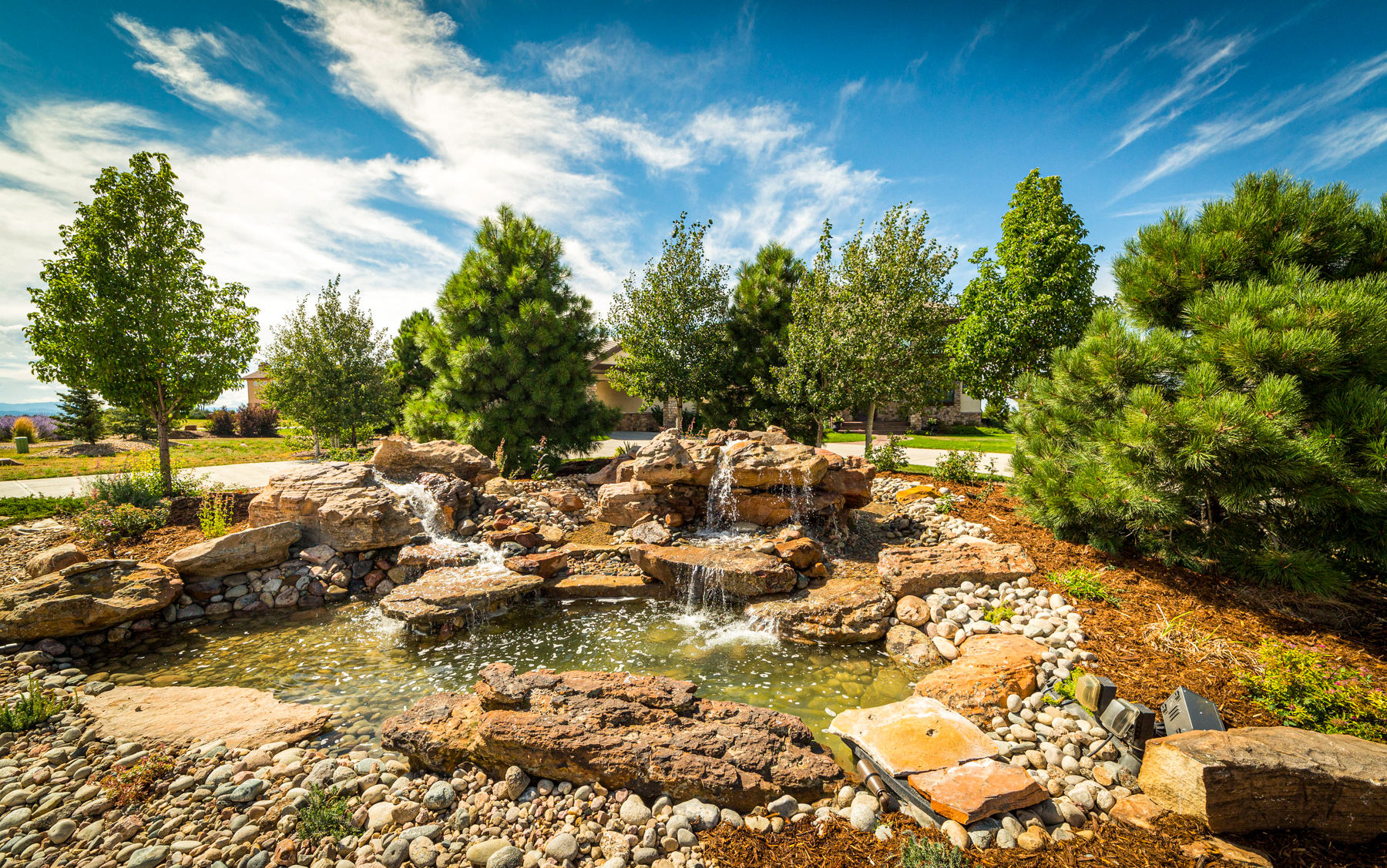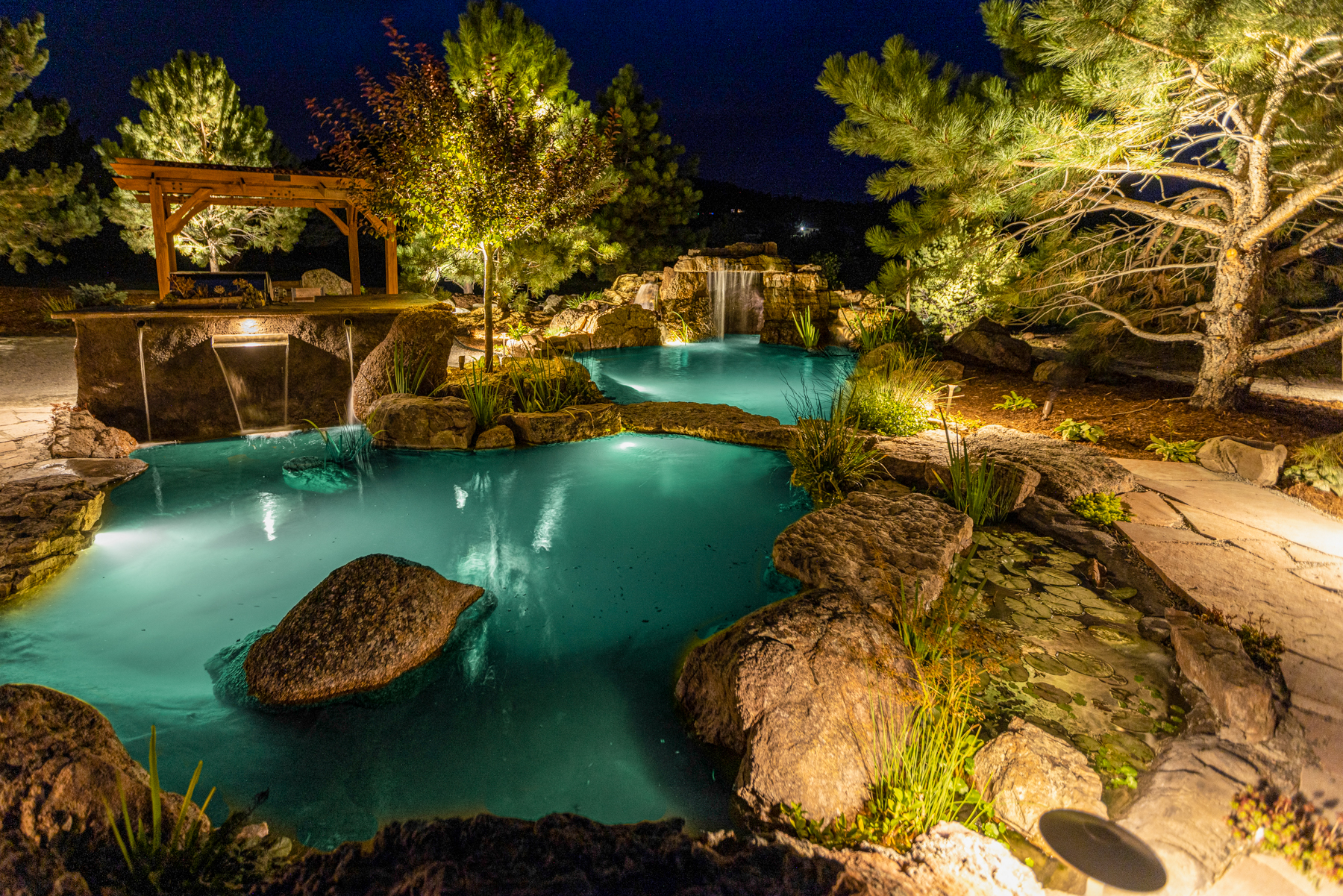A natural-looking Colorado pond is a picturesque addition to any outdoor area. As the sun reflects off its still waters, it creates an atmosphere of serenity and tranquility. But creating such a beautiful oasis can seem daunting at first. Fortunately, with some simple steps and planning, anyone can create their own natural-looking Colorado pond in no time!
The process of constructing a natural-looking Colorado pond begins with understanding the context within which it will be placed. It is important that the landscape surrounding the pond complements its design and complements the overall aesthetic. Furthermore, careful consideration should also be given to what type of fish or plants are chosen for the pond as this will add further depth to the environment created by its presence.
Lastly, once all planning has been completed, proper construction techniques must be employed in order to achieve desired results. This includes choosing materials carefully and ensuring they have been installed correctly. With these considerations made, a beautifully crafted natural-looking Colorado pond can become reality — providing years of enjoyment for friends and family alike!

Creating a natural-looking Colorado pond requires more than just dumping a bunch of water in the backyard. From selecting the best spot for the pond to planning out animal-friendly landscaping, there are many considerations when designing a beautiful and functional water feature. With careful thought and creative flair, you can create an attractive pond that will provide years of enjoyment for both humans and animals alike.
The first step is deciding on the right location for your new Colorado pond. It should be situated away from any large trees with shallow roots as they may disrupt the balance of the water feature over time. Additionally, take into account how much sun exposure it will receive throughout the day so you can choose plants and fish accordingly.
Once you have identified the perfect site for your natural pond design, it's time to start thinking about which features to include in its construction plan. Your chosen landscape must provide adequate space for aquatic life while still being aesthetically pleasing; this could involve adding rocks and boulders around edges, planting native vegetation, installing stepping stones or other decorations, creating gentle slopes along hands-on pathways such as streams or creeks etc., Whatever choices you make ensure that they enhance not only its visual appeal but also contribute to sustaining healthy lake conditions through their impact on water quality and flow rates. Of course, these are all things that LCM excels at helping our clients with, and we're there to help every step of the way.
The use of native plants is essential in creating a natural-looking Colorado pond. Incorporating native water and aquatic plants can help create an environment that blends naturally with its surroundings.
Native water and aquatic plants are typically hardy enough to withstand the harsh weather conditions found in Colorado. They provide shelter for fish while also providing vital oxygenation throughout the body of water. For example, native species like Elodea nuttallii (waterweed), Potamogeton perfoliatus (clasping leaf pondweed) and Myriophyllum spicatum (Eurasian milfoil) are all well-suited for ponds located in Colorado.
When selecting the right combination of native pond plants it’s important to consider the size of your pond, shade requirements, soil type, climate, depth, amount of sunlight needed, pest control needs and other factors associated with specific types of vegetation. By taking these aspects into consideration when choosing native species you should be able to achieve a balance between aesthetics and practicality without sacrificing any ecological value.
In addition to being aesthetically pleasing, adding native plant species helps maintain healthy ecosystems by providing food sources for wildlife, controlling erosion through their root systems and filtering pollutants from runoff before entering bodies of water. All these benefits combined make incorporating native plants an integral part of building a natural-looking Colorado pond.
Read more about the Best Aquatic Plants for the Colorado Environment:
Creating a natural-looking Colorado pond requires careful consideration of rock placement. It is essential to ensure the rocks used are appropriate for the area and create an aesthetically pleasing pond edge. Furthermore, it is important to consider the depth of water when placing rocks in order to maximize their effectiveness. Here are four key elements that should be taken into account when choosing and arranging stones:
1. Use natural rocks or custom faux rocks – Natural rocks from nearby rivers or quarries can add texture and color to your pond's edging. The shapes of both natural stones and custom artificial rocks will also help create a more organic look.
2. Vary sizes and shapes – Try incorporating different sized rocks around the perimeter of the pond for visual interest. Consider using larger boulders as well as smaller pebbles, which can provide contrast without overwhelming the landscape design.
3. Think about location - Rocks placed along the shoreline should be just above or below the water line depending on whether you want them visible at all times or partially submerged during wetter weather conditions. Make sure they're firmly anchored with gravel before adding any plants or fish to prevent movement over time.
4. Create layers - To give your Colorado pond extra dimension, use multiple layers of rocks throughout its edges. This helps break up large expanses of open space while providing shelter for small wildlife species such as frogs and salamanders who may take refuge in shallow water depths during winter months.

When selecting the boulders for a natural-looking Colorado pond, size is an important factor to consider. The ideal boulder size should be proportionate to the overall area of the pond and also dependent on how many other rocks and plants will be included in the design. Boulder placement can greatly affect the aesthetics of a Colorado pond; when placed strategically, they can create depth and dimension. Also, careful consideration should be given to what type of rock should be used as well as their shapes; a combination of round, flat and angular stones helps achieve a more natural look.
The selection process may require some trial and error before finding the right balance between texture, shape and color that results in an aesthetically pleasing environment. It is important to remember that large rocks are heavy and difficult to maneuver so caution should be taken when choosing them. Additionally, due to safety reasons it is recommended not to use any sharp or jagged objects such as river cobbles which could cause injury if someone were to fall into the water. Using lightweight, custom faux rocks is a popular choice for these reasons, and many others.
In order for your Colorado pond project to have a truly organic effect, careful consideration needs to go into each step of its creation – from boulder selection all the way through installation. Of course, we can also create custom faux rocks for your water feature to match any environment!
Once the right boulder selection has been made, it is time to focus on establishing a balanced ecosystem in the Colorado pond. A successful natural-looking pond requires careful consideration of its components: aquatic plants, fish species and filtration systems. Having an understanding of all these components will help create a healthy balance in the pond ecosystem.
Aquatic plants are essential for providing oxygen and shade for fish and other creatures living in the water body. In this context, native plant species are best suited since they can survive harsh weather conditions as well as provide food sources for wildlife that visits the pond environment. Additionally, aquatic plants also play an important role in filtering out pollutants from entering into the water bodies, which helps in maintaining their quality.
Finally, installing a good filter system is necessary to ensure cleanliness around your ponds waterscape. Filters help remove dirt particles, debris and any pests which might interfere with biological processes taking place inside the pond like decomposition activities carried out by microorganisms or algae blooms caused by sunlight penetration. A good filter system not only keeps your pond aesthetically pleasing but also helps keep its inhabitants safe from unwanted elements present in the surrounding air or soil.
A natural looking pond in Colorado is a beautiful addition to any landscape. Through careful consideration of the environment, rock placement, and selection of native plants, it is possible to create an oasis that will thrive for years to come. With thoughtful design decisions such as placing boulders strategically around the perimeter, one can create the perfect balance between nature and man-made elements. The contrast between the two creates a unique atmosphere that allows both flora and fauna to flourish.
The combination of carefully placed rocks and vibrant foliage helps establish a healthy ecosystem while also adding visual appeal. A variety of native species can be added to bring additional life into the area and help maintain water quality by filtering out toxins. Additionally, proper care should be taken when designing the shape of your pond so it looks more naturally formed rather than like an artificial swimming pool or lake.
With attention paid to these details, you can easily create a Colorado pond that has beauty beyond compare; an inviting retreat from everyday stresses. We want the whole process of building your water feature to be as stress-free and painless as possible as well. That's why we provide as much communication as possible up front so you understand our process, the time frame for completion, the cost, and a 3D rendering of the finished project before any construction starts! Reach out if you have questions or are ready to start the process.

Mon–Thurs 8 a.m. – 5:30 p.m.
Friday 8 a.m. – 5 p.m.
Sat & Sun Closed

